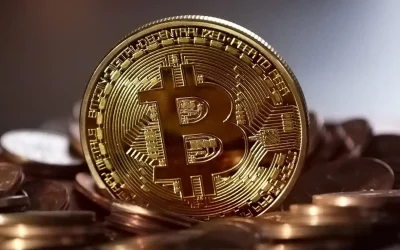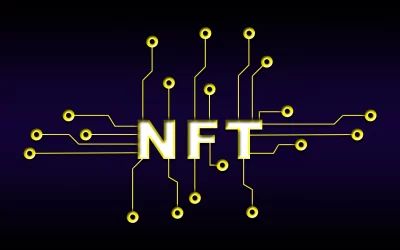Bitcoin

Bitcoin
- (BTC) is a digital currency, used and distributed in a totally electronic manner.
- It is a decentralized peer-to-peer network, free from the control of individuals or institutions.
- It cannot be printed, and its quantity is limited: no more than 21 million can be created. Every 4 years the reward for miners is halved.
Who created bitcoin?
Bitcoin is an open-source software introduced in 2009 by an anonymous programmer, or group of programmers, under the pseudonym of Satoshi Nakamoto. There has been much discussion about the true identity of the creator of BTC, but to date it still remains a mystery.
Nakamoto claimed to be a 37-year-old man residing in Japan. However, because of his perfect English and his codes never labeled in the Japanese language, this claim of his leaves much puzzlement. In mid-2010, Nakamoto decided to move on and devote himself to something else, leaving the cryptocurrency in the hands of a small group of members of the Bitcoin community. He also appointed Gavin Andresen chief developer of the project.
According to some estimates, Nakamoto appears to own about one million Bitcoins.
Who controls Bitcoin?
According to Gavin Andresen, the aftermath of Nakamoto’s departure from the project, the programming team focused primarily on perfecting the decentralization of the currency. Indeed, Andresen wanted Bitcoin to be able to continue to exist completely autonomously, even if he ‘were to get hit by a bus.’
For many people, Bitcoin’s advantage over traditional currencies is its total independence from governments, banks and corporations. No authority can interfere with transactions, impose additional charges for exchanges or take away users’ money. Moreover, Bitcoin’s movements are totally transparent: every single transaction is publicly stored within a giant ledger known as the Blockchain.
Essentially, because the Bitcoin network cannot be controlled by a single entity, it gives users total control over their finances.
How does Bitcoin work?
Users can only view the amount of Bitcoin on their wallets and the results of transactions.
But behind the scenes, the Bitcoin network shares with all participants a public ledger, called the Blockchain, containing every single transaction that has ever occurred from its creation to the present. Each entry in this digital ledger is then combined into “blocks.”
If someone tried to change even one letter or digit in a block of transactions, it would also affect all subsequent blocks. And since this is a public ledger, errors and fraud attempts can be easily detected and corrected by anyone.
The user’s wallet can verify the validity of each transaction. The authenticity of exchanges is ensured through a complex system of digital addresses and signatures.
Because of the verification process and depending on the exchange platform used, it may take a few minutes to complete a transaction. The Bitcoin protocol is designed so that a new block is created every 10 minutes or so.
Characteristics of Bitcoin
Decentralization
One of Satoshi Nakamoto’s main goals during the creation of Bitcoin was total independence of the currency from any government authority. It was designed so that any person, company or machine involved in the process of mining and verifying transactions could be part of a vast network. And even if part of the network was deactivated, the money would still keep moving.
Anonymity
Nowadays, banks know every single detail about their customers: movement history, addresses, phone numbers, spending habits and so on. Bitcoin works differently, in that the mere wallet address cannot be linked back to any personal information. And while some individuals simply do not want their money tracked and managed by outside authorities, it is possible that Bitcoin’s anonymity supports illegal activities such as drug trading and terrorism.
Transparency
Bitcoin’s anonymity is only relative, as every single transaction is recorded and stored within the Blockchain. By carefully studying the entire Blockchain, it would theoretically be possible to find out how much money is inside each individual wallet in the network. But being able to identify a person through their Bitcoin address is a virtually impossible feat.
If anonymity is particularly important to a user, some extraordinary measures can be taken to avoid being recognized. He can, for example, employ extremely secure types of wallets, or use more than one address at the same time so that he does not have to transfer large sums of money into a single wallet.
Speed
Normally, the Bitcoin network processes payments almost instantaneously: regardless of geographic distance, it takes a few minutes to send one’s money to another user, unlike traditional banks whose timelines stretch for days.
Finality
Once Bitcoins have been sent, it is not possible to get them back unless the recipient decides to send them back. This ensures receipt of payment, meaning that it is impossible to scam someone by claiming not to have received the money.
What can I buy with Bitcoins?
Back in 2009, when it was introduced, it was still unclear how or where this new currency could be spent; today it can be used to purchase virtually anything. For example, IT giants such as Microsoft and Dell accept payments in BTC for a boasted range of digital products and content, and the airlines AirBaltic and AirLithuania allow the purchase of tickets with Bitcoin.
Bitcoin is still a young and quite complex form of payment, so it is normal that spending options are still limited in some cases. However, more and more companies and businesses, from small local stores to large multinational corporations, are accepting payments in BTC.
Moreover, because of its ever-changing exchange rate, Bitcoin has become one of the most profitable investment opportunities in recent years. Although it is an unstable currency and in some ways still not recognized by governments, in 2017 its value skyrocketed, breaking through the $20,000 mark.
How can I get Bitcoins?
The easiest way to get Bitcoins is by buying them. Bitcoins are available on our exchange, or you can get them directly from other people through a marketplace. They can be exchanged for cash, credit or debit card transfers, or even other cryptocurrencies. But you need an appropriate wallet first.
There are so many variations of these, but the most widely used are online wallets and software wallets that you store on your computer’s hard drive. However, neither of the above options is perfectly secure: an online service can be attacked by hackers, while a disk can deteriorate and corrupt the data it contains. There are also mobile wallets, which are particularly convenient because they do not require storage of the entire Blockchain to be used. The more experienced tend instead to use hardware or paper wallets, which are totally immune to both cyber attacks and equipment failure.
And then there is mining. Just a few years ago, anyone with a powerful enough computer could engage in Bitcoin mining: today, unfortunately, this is no longer the case. The popularity and ever-increasing exchange rate of BTC has prompted large companies to enter the field with expensive devices created specifically for mining, consequently making this activity unprofitable for ordinary users.
Advantages
Freedom
Bitcoin is based on the idea of individual freedom. Freedom from government authorities that control the money and transactions made by citizens, as well as able to impose onerous fees at will. In recent years, when it comes to buying goods online, cryptocurrencies have become almost as accepted as traditional money.
High portability
One of the distinguishing characteristics of any currency is portability, that is, ease of transport and use. Because Bitcoin exists only in digital form, even large amounts of money can be carried on a USB stick or stored on a network. Cryptocurrencies offer users the freedom to send and receive money by simply scanning a QR code or pressing a button on an online wallet. The transaction is almost instantaneous, no fees need to be paid, and the money is transferred directly from one person to another without the need for intermediaries-all that is needed is an Internet connection.
Fees set by users
Another indisputable advantage of the Bitcoin network is the ability to set the amount of the fee–or choose not to pay at all. Fees paid by users are received by the miners at the end of the generation of a new block.
The fees are totally voluntary, and act as an incentive for miners to include a particular transaction in the newly generated block. Nowadays this incentive represents a small percentage of the miners’ profit, in a few halving will become a major slice of the reward received by the network upon completion of a block.
The user himself then makes the choice between cost and waiting time: a higher fee equals a faster processed transaction.
No PCI
PCI (Payment Card Industry) refers to debit, credit, prepaid, ATM and POS cards and their associated companies. Within it are organizations involved in storing, processing and transmitting user data, and it includes all the major credit card companies on the planet. PCI imposes a very strict set of rules and regulations.
But while a unified set of rules is convenient for large companies, it is somewhat less so for users. When using Bitcoin, there is no need to submit to the rules imposed by PCI, allowing users to explore new markets that do not allow the use of traditional credit cards.
As a result, users can pay cheaper fees, expand their markets and reduce administrative expenses.
Security and control
Bitcoin users have total control over their transactions: no one can withdraw money from a wallet without the explicit consent of the owner, unlike what often happens with other payment methods.
Transparent and neutral
Information about any transaction that has taken place is stored on the Blockchain, verifiable by anyone at any time. Bitcoin’s Protocol is encrypted, making it impossible for a single individual or organization to change. In addition, the network is decentralized, so that no one can take total control of it. For these reasons, Bitcoin will always be neutral, transparent and predictable.
It cannot be counterfeited
One of the most popular digital counterfeiting methods is “double spending,” that is, being able to spend the same amount of money twice. To counter this kind of scam, Bitcoin and other cryptocurrencies use blockchain technology and various consensus mechanisms.
Disadvantages
Legal issues
The legal status of Bitcoin varies drastically from country to country. In some states the use of BTC is encouraged, while in others it has been banned and made illegal.
The main concern is that the total anonymity offered by the currency may attract criminals and encourage illicit activities. In 2013, upon the closure of Silk Road, a famous online marketplace dedicated to the sale of illegal goods, the value of Bitcoin in fact (dropped dramatically).
Level of recognition
In many countries Bitcoin is perfectly legal and recognized as a currency, while in others there are still no laws or regulations to regulate the use of this currency.
Most businesses, no matter how large or small, are still unaware of its existence. Despite the many steps forward, to date it is still not possible to completely abandon traditional money and use only BTC.
Lost Keys
A key is an alphanumeric code needed to access a Bitcoin wallet: losing one’s key also means losing the wallet. Fortunately, most modern wallets have backup methods and recovery mechanisms, provided these are set up in time by the user.
Volatility
The price of Bitcoin rises and falls constantly, so much so that some consider it a mere financial bubble ready to burst. Its value is unpredictable, it can change drastically and very quickly: the most imprudent investors can face huge economic damage.
Continuous development
The future of the currency is still unclear. At the moment, banks and governments do not control Bitcoin, so much so that the markets are hardly regulated at all.












